I went to the World Heritage Site Shirakawa-go in the winter season which is well-known as a heavy snowfall area.
Shirakawa-go is located in Gifu prefecture.
I wish I could also inform you what has been changed by COVID-19 and also want to introduce how to have fun in the mysterious Shirakawa-go covered snow since I saw some tourists who were in a bit of trouble there.
This trip purpose was
- To see the Shirakawa-go covered with snow
- Stay in the world heritage site Shirakawa-go Hostel
- To see Shirakawa-go lightup
so I decide to go by myself and not participate in the tour. If you are considering going private this article should be beneficial for you.
How to go to World Heritage Site Shirakawa-go
I went to Shirakawa-go from Nagoya. The option to go to Shirawaka-go is below
- Use bus
- Join the tour
- Use car
there are 3 options and I chose option 1. The reason I choose 1 is
- Wanted to stay in the world heritage site Shirakawa-go hostel (normally tour don’t have)
- Don’t have experience in driving in heavy snowfall area
- Want to control the schedule by myself
Since from Nagoya to Shirakaw-ago there were buses so it was very easy for me to transport there.
From Nagoya to Shirakawa-go the price is depends on the season and day but normally it around 3,500 yen to 4,000 yen (35USD to 40USD) which is one way. Please refer to the official website below for more details on the schedule and price.
Bus from Nagoya to Shirawaka-go
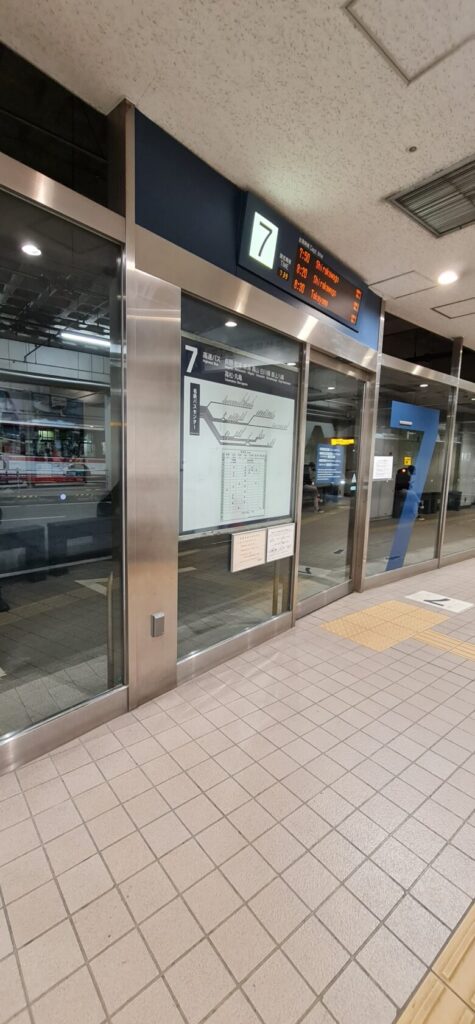
What you need to do at first once arrive to Shirakawa-go
If you use the bus you will arrive at Shirakawa-go bus terminal.
If you are using the car at first you should come to Shirawa-go tourist association.
You can rent the boots for 1 day per 700 yen (7USD) if 2 days price will become to 1,500 yen (15USD). I don’t think you have the boots for snow so better not buy them but rent them and your shoes will be kept here.
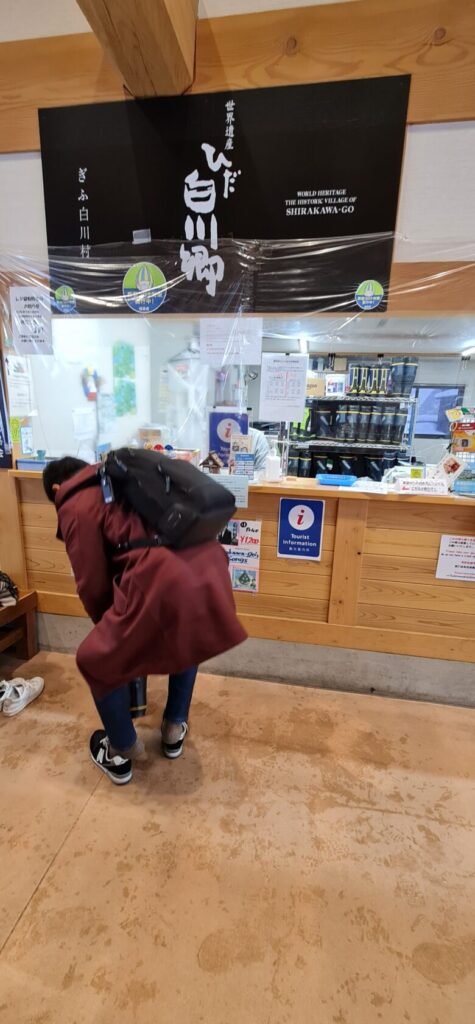
Most of the road snow is removed by Shirakawa-go people who lived there but all snow cannot be removed.
When I went there many tourists were wearing sneakers, heels or sandals and slipping around so I felt danger about it.
It’s a pitty if you injured and stop the amazing sightseeing and also cause trouble to your life after.
Even not using boots or even using boots I recommend using heat pad.
There is heat pad for shoes which prevents your foot from freezing.
※Normal heat pad will become too hot for your foot so not good to use
[itemlink post_id=”2818″]
For your reference below is the basic info about Shirakawa-go bus terminal.
Address:1086 Ogimachi, Shirakawa, Ono District, Gifu 501-5627, Japan
TEL:(+81)0577-32-1688
Wada house
When you check the world heritage site Shirakawa-go sightseeing this place will be highlighted every time.
Wada house is nominated as a National Important Cultural Property since the existing house of Gassho-zukuri has been used for more than 300 years.
The entrance fee is 300 yen (3USD) for adults and 150 yen (1.5USD) for children.
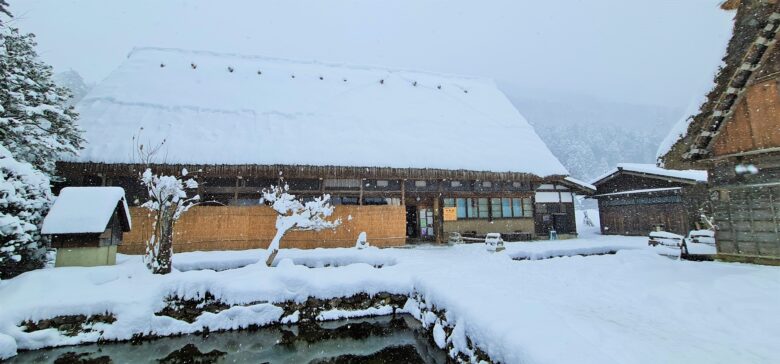
I know that Shirakawa-go was breeding silkworms to earn money for the village but actually the main business was raw material of gunpowder ”flame nitter”. It was my first time knowing that when I visited Wada House.
It is mentioned in Wada House ancient documents about it.
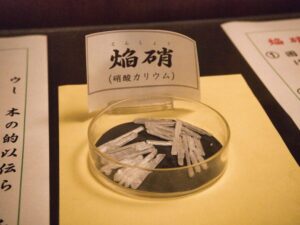
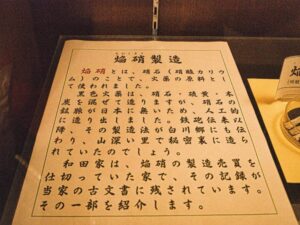
You can visit to 2nd floor and 3rd floor inside Wada house. So please see the design of the thatched roof.
If lucky you can see the silkworm too.
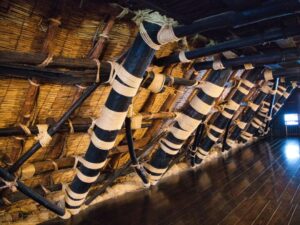
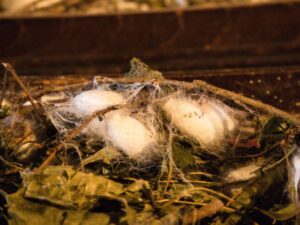
Nagase house
It’s 5th-floor Gassho-zukuri house which has 250 years of history.
The entrance fee is the same as Wada House.
The entrance fee is 300 yen (3USD) for adults and 150 yen (1.5USD) for children.
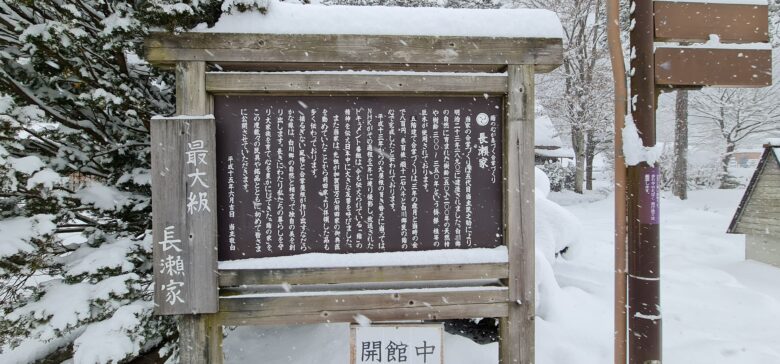
In 2001 Nagase house thatched roof was changed for the first time in 80 years.
From 2nd floor, you can see the medical equipment which was used in the past there since Nagase house was doctor’s family.
Kanda house
Kanda house is a bit younger than Wada house and Nagase house which is around 150 years but that is because it was independent of Wada House.
The entrance fee is 400 yen (4USD) for adul t and 200 yen (2USD) for children.
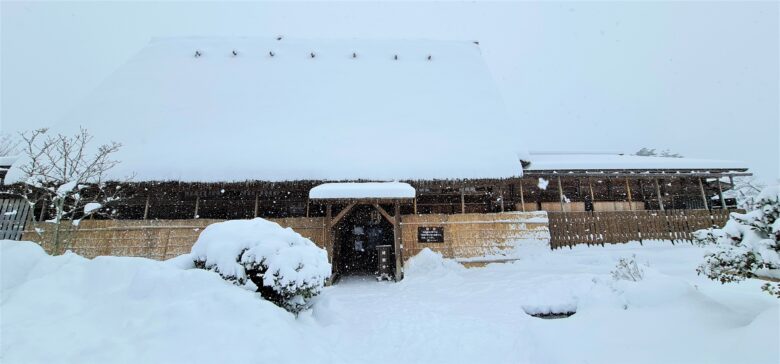
The interesting thing here is the clock right behind the fireplace. It’s still functioning for more than 150 years. Every hour it would ring and went I came here it was just 12 o’clock so I was able to hear without waiting like a surprise.
If you want to hear you should manage your time to see the 150 year old clock to be ring.
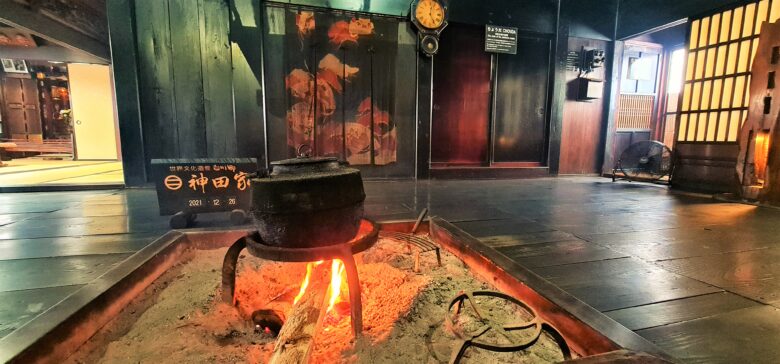
At Kanda house there is room to monitor the hearth for the specialist. From that room you can see a fireplace from the peephole. Please find it but it’s really easy.
At Kanda house you can see the stuff used in Shirakawa-go.
When you scan the QR code it can jump to the page for the name and function of the stuff.
Not only in Kanda house but mostly in Shirakawa-go area you can use the free Wifi.
The farm tools and other tools used at that time is introduced there and if you are interested in the construction method for making Gassho-zukuri you can check some know-how there. You may understand the wonderful wisdom of surviving in heavy snowfall areas by reading the construction method.
Below the picture is the reference for each page.
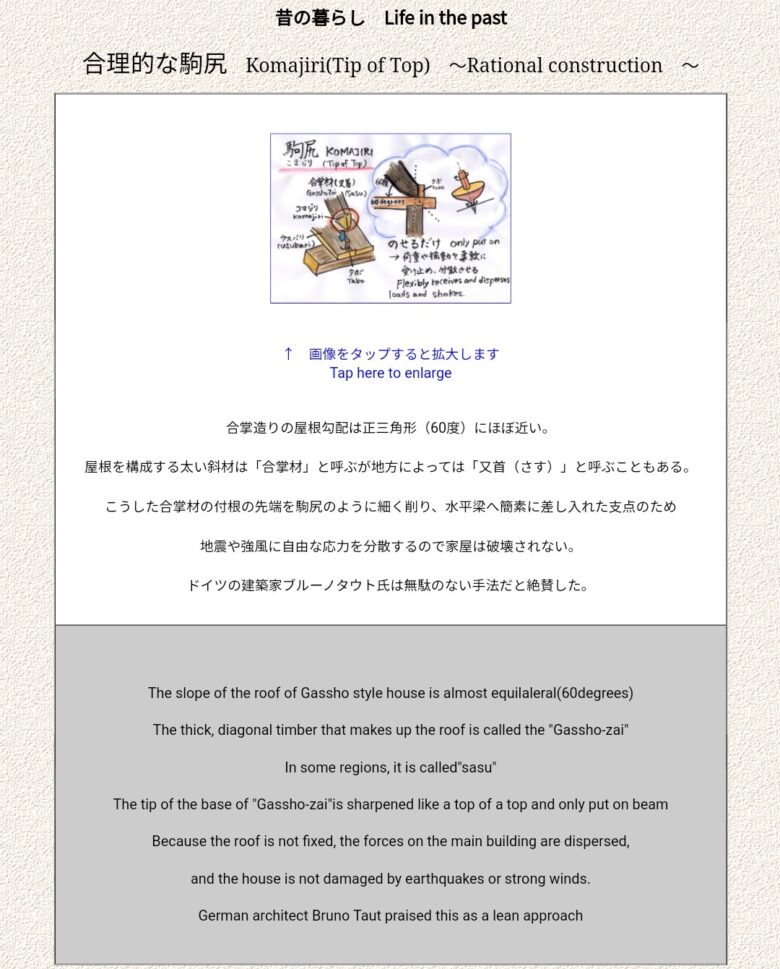
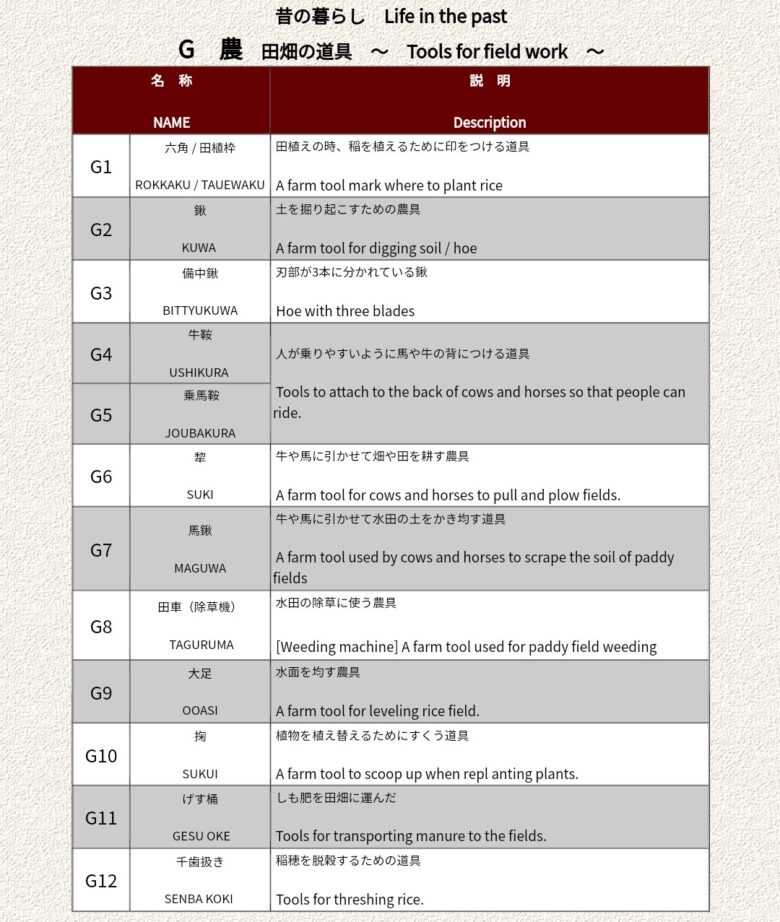
Myozenji
It is the biggest shrine in the village. The main hall, kitchen & clock tour is also following Gassho-zukuri. Especially clock tower with Gassho-zukuri is very rare building in Japan.
The structure of the clock tower roof is a thatched roof but the 1st flow is using eaves is interesting and it was built in 1801 by 1,425 people support.
The entrance fee is 300 yen (3USD) for adults and 150 yen (1.5USD) for children.
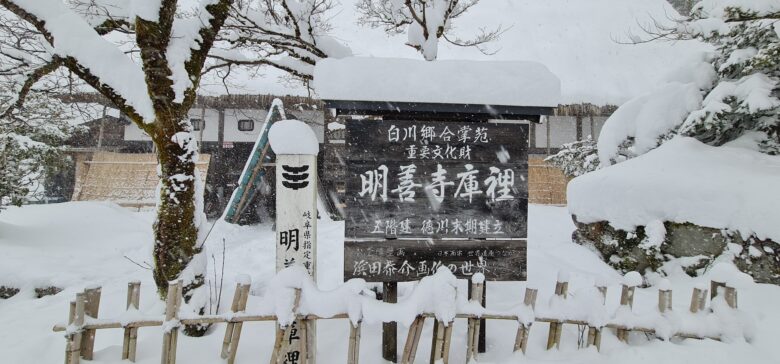
Compared with other house’s fireplaces I felt Myozenji was the most warmest fireplace. Especially during winter before you leave each house I prefer to warm up in front of the fireplace.
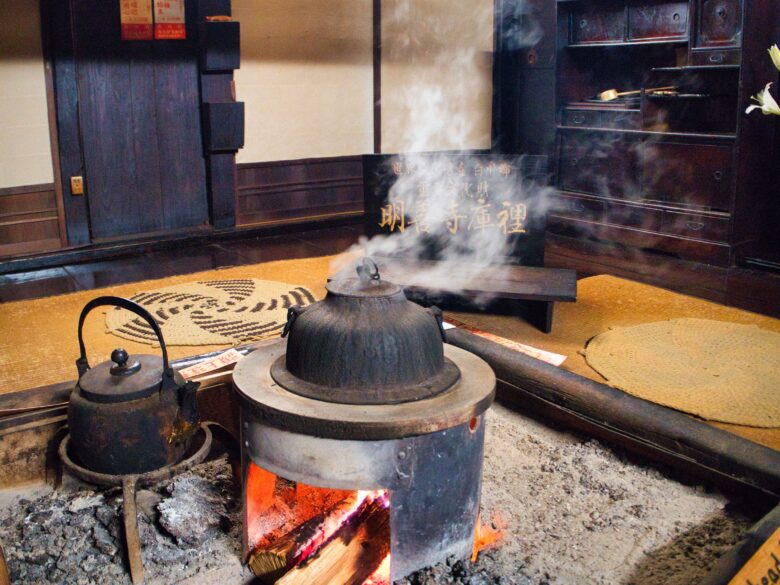
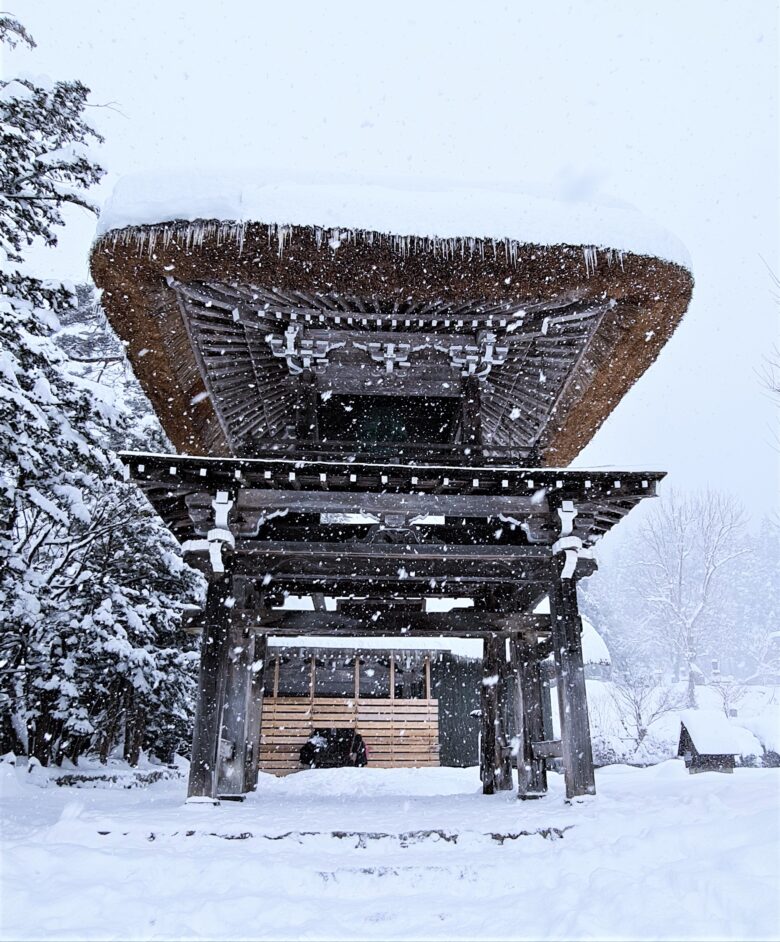
The below picture is one of my favorite photos taken from the upper floor of Myozenji.
Fusuma (sliding screen) can open/close so try to find your favorite landscape. But when you open don’t forget to close. The snow will enter inside the house and become wet.
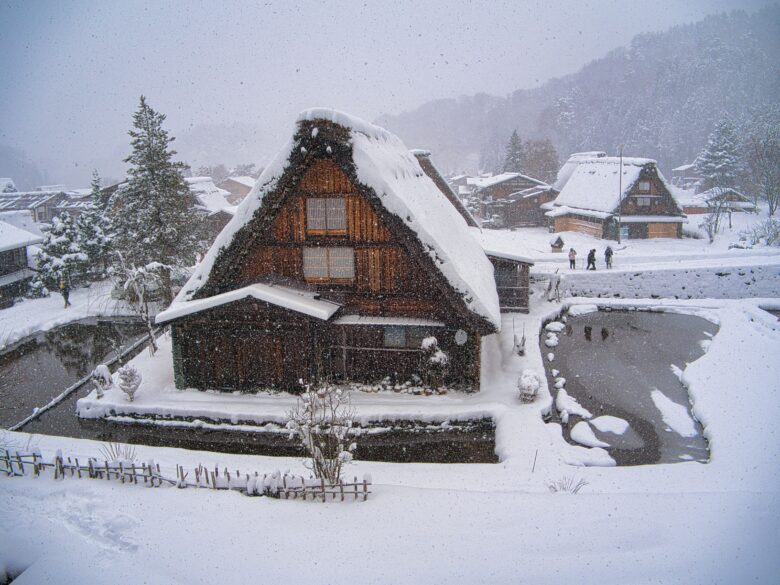
Shirakawa Hachiman Jinjya
Shirakawa Hachiman Jinjyu is very historical temple which was built in 708 – 715.
The old cedar in the precincts is said to be 200 to 300 years old and is nominated as a natural monument.
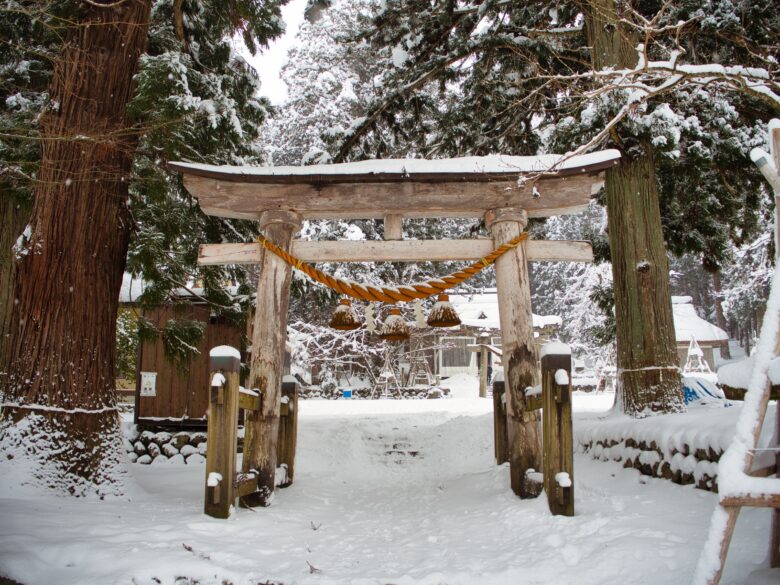
Every October they held “Doburoku festival” the people who pray here can get doburoku.
Doburoku is unrefined Japanese sake.
Shirakawa Hachiman Jinjya is also well known in Japanese anime “Higurashi no nakukoroni” because this is the model place that was used inside the anime.
Shirakawa-go can be a fun place for the “Higurashi no nakukoroni” fans since it’s not only this temple but better to come in summer.
Shirakawa-go three houses
To go to Shirakawa-go three houses you need to walk south from the Shirakawa Hachiman Jinjya along the road.
It’s not known as the famous spot in Shirakawa-go but this is also one of my favorite landscapes.
Because almost no other tourist here so you can spend your time with any interfer. And in front of three houses, you can see the rice terraces covered with snow.
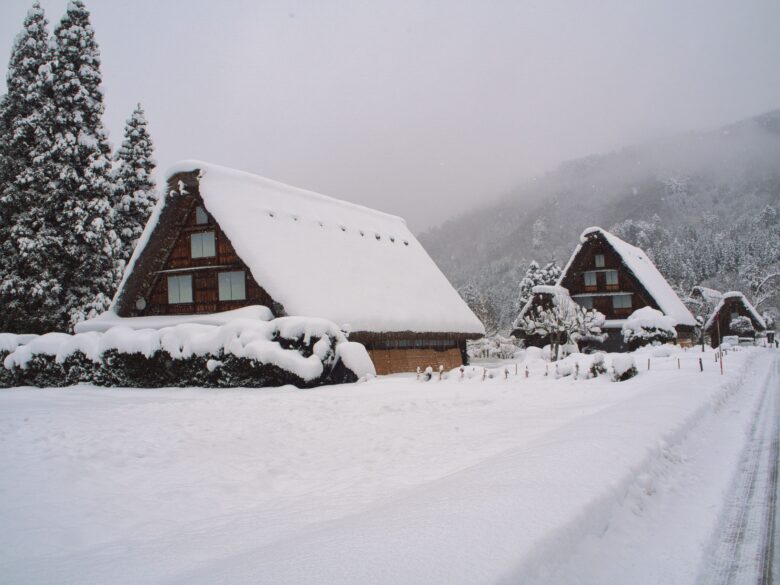
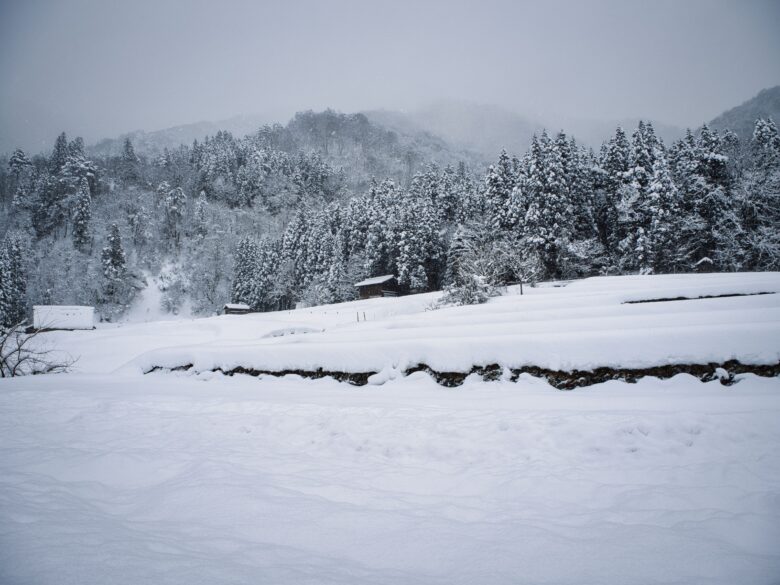
It’s a bit of regret because if sunny it would more nicer view.
Shirakawa-go light-up
During winter Shirakawa-go has a big event which is the light-up.
It is normally held from January to February and you must book to join.
This time I wasn’t able to participate in the event but just try whether I could see the light up or not.
The place where you can see the entire of Shirakawa-go is the Ogimachi Castle Observation Deck.
Address: Ogimachi, Shirakawa, Ono District, Gifu 501-5627
Normally you can take a book but when the snow piles up the bus will stop and you need to take a walk to get there.
From Shirakawa-go village it took around 15 – 20 minutes.
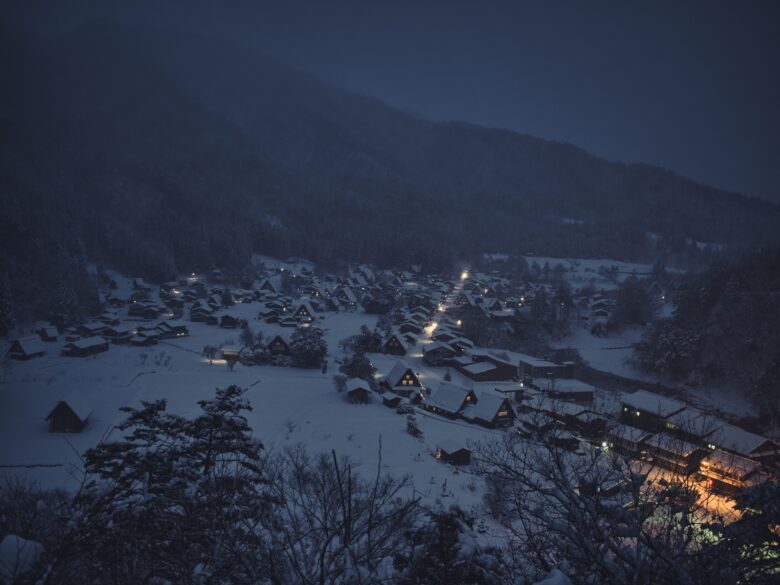
Compared with the official lightup event the place which is light-up is less.
According to the people who live there normally they only use the 1st floor so it’s seldom to turn ON the light on the 2nd or the 3rd floor.
You can refer to this picture link which is taken by Shirakawa-go tourist accosiation.
But there are some houses which turn ON the light so you can take pictures as per below.
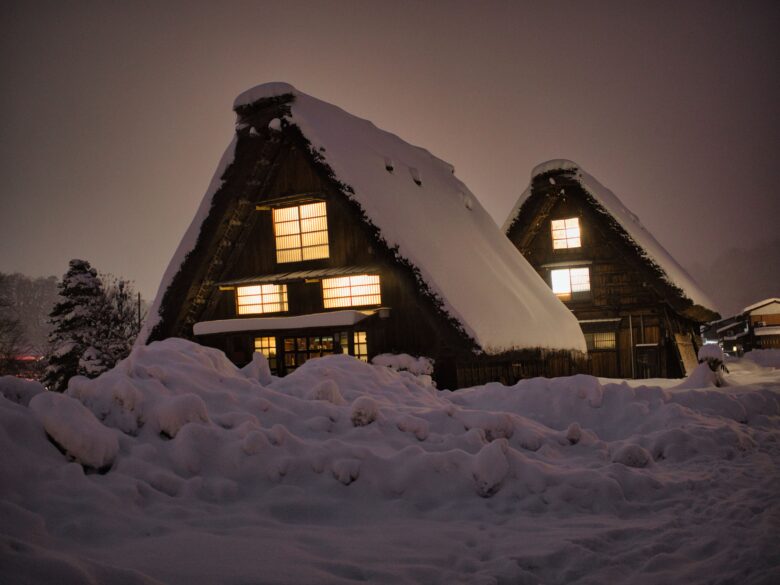
You can enjoy the scenery where you can feel the warmth of the light in the cold environment.
It’s quite difficult to join the light-up event but these normal days lightup might be more easy you to arrange to see it so let’s try.
Shirakawa-go trivia
It’s trivia. It doesn’t help your sightseeing but I believe you can know more about Shirakawa-go.
Some info I also didn’t know and just noticed on the TV which I saw recently in Japan.
- Shirakawa-go thatched roof is facing east and west. Why the house structure is like this?
- Since the sun will rise from east and sunset to the west. The sunlight can hit to the roof properly and equally to support the snow to melt.
- At Shirakawa-go even now people is using fireplace. Why they are using fireplace?
- By using fireplace smoke tar will be generated and stick to the thatching. It will prevent from the rain water and pest.
If not using the fireplace thatcing lifetime can be less than 20 years and cause the outbreak of insects worse.
Other than this there is also an event for firefighting training and you will be really lucky if you can see this great scenery.
Due to the training purpose for the village now they don’t announce to the tourists when they will do this firefighting training.
Summary
- When snowing better use boots for sightseeing (rent is possible)
- Use a heat pad for your foot to prevent frozen your foot
- After visiting Wada house, Kanda house, Nagase house & Shirakawa Hachiman Jinjya you’d better go to Shirakawa-go three houses. Not so many people there so you can occupy the thatched house and also see the rice terrace covered with snow
- Even if you don’t join the Shirakawa-go light-up event you can see amazing light-up scenery
- Including Gassho-zukuri Minkaen you can finish sightseeing within 1 day so a day trip is also required (arrive below lunch time is required)
- Wifi is able to be used in Shirakawa-go village mostly
By this trip it recognizes the difficulties of living in snow countries.
Nevertheless would be able to enjoy how nice is Shirakawa-go and due to the big effort of the people who live there it is success in maintaining this Shirakawa-go.
Gassho-zukuri Minkaen which is the open-air museum and the Shirakawa-go hostel will be introduced in other articles.
If you can arrive at Shirakawa-go before lunch and take the last bus (if Nagoya departs from Shirakawa-go at 16:30) you just need 1 day for sightseeing.
Thank you for reading.
Japan offers a wide variety of sweets. You will probably have a hard time deciding which to buy: chocolate, candy, biscuits, or traditional Japanese sweets. Also, some are seasonal, which will make you even more confused.
There is a website that summarizes what is the best Japanese sweets, and we hope you will enjoy Japanese sweets with this website.
Japanese snacks lab
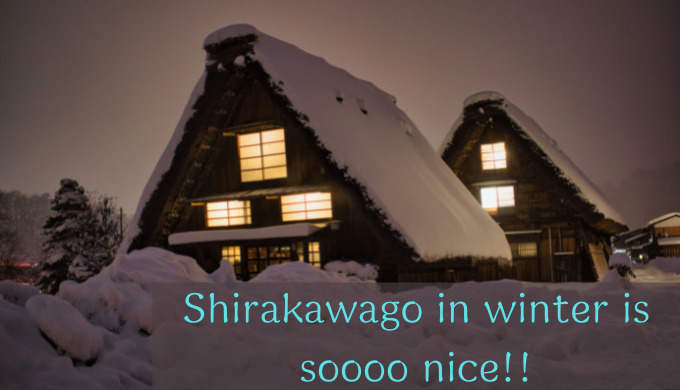

Comments